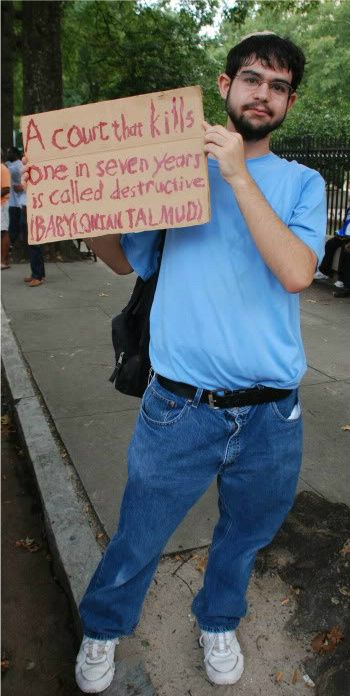I knew the anti-rail candidate for mayor of the City and County of Honolulu (basically the entire island of Oahu) was wrong-headed. There are quite possibly problems with the specifics of Mufi Hannemann's rail plan, but the general plan makes a great deal of sense. Hawaii has the density and the congestion necessary for better transportation options (everybody agrees on this).
Given that 75% of the Honolulu urbanized area's residents (based on the official over 60% of Oahu's residents number (> 525,000 people in the corridor in 2000) divided by the 718,182 residents of the urbanized area live no more than 2 miles (eyeballing, but seems pretty accurate) of the corridor, a fixed guideway makes sense since most people could walk to a station and pretty much everybody in the area could bike to one. Everyone can get the bus to it.
Since Hawaii
a) has to have liquid fuel shipped in from the mainland at huge cost
b) has unbelievable renewable energy sources
1. geothermal from the volcanoes
2. solar from the beautiful tropical sun
3. fairly steady wind from a ton of places
4. a whole bunch of great ocean-based energy sources (tide, waves, thermal energy), being an island
5. already has several hydroelectric plants
it makes sense for the guideway to be electrified. Rail is compact so that makes sense, and grade separation makes sense given the heavy traffic (to avoid delaying the traffic) and the heavy expected ridership given the affinity of Hawaiians toward public transportation (based on ridership of TheBus).
But Dr. Prevedouros being wrong on rail isn't what makes him an idiot.
This article he wrote for the alternative Hawaii Reporter is what makes him an idiot.
It's particularly bad since he's supposed to have a degree in transportation engineering.
The article is entitled "City Transportation Priorities: Phoenix Versus Honolulu," and basically says that Honolulu should follow Phoenix in its priorities.
First of all, nobody should be following Phoenix in its priorities. That area may be utterly screwed by its irresponsible sprawl (but it may overcome the rising heat and ebbing water supply; let's not count it out).
But that very sprawl makes Phoenix a particularly terrible role model for Honolulu.
As noted above, 75% of Honolulu residents live (and I would guess 60%+ work) no more than 2 miles from the corridor.
Oahu has a grand total of 8 major highways (only one [H1] fully in the urbanized area), and the other two freeways are branches off of H1, which is the main corridor where the rail would run (H2 is 8 miles long north to the inland military bases, H3 is 14 miles east across the island to the northeast side).
The Phoenix metroplex is spread out over about 800 sq. miles. Nowhere is there even close to the population density over a 3-4 mile wide corridor as there is along the Honolulu corridor.
Phoenix denizens also tend to have legs solely to reach the accelerator. Honolulu people take more trips on transit than Phoenix denizens.
That's not just more per person, that's more, period.
The about 3.6 million people in the Phoenix-Mesa urbanized area took 64,330,702 unlinked trips on transit in 2006.
The 720,000 or so in the Honolulu urbanized area took 71,695,536 unlinked transit trips that year (see the urbanized area totals, courtesy of the American Public Transportation Association
And point about the "oppressed and overtaxed" Honolulu leading to lack of growth? New York City, which clearly is overtaxed if anywhere is (Honolulu is a decent amount below the median of state's largest cities); New York is significantly more heavily taxed, and even moreso more heavily taxed than Phoenix.
But New York's gained 30,000 more residents (265,000 vs. 230,000 gain) than Phoenix in the period from 2000-2007.
Why has New York been growing so much?
Several reasons, but one of the biggest: its great great-separated rail transit system.
skip to main |
skip to sidebar

Protest Vigil for Troy Davis
Pages
Picture of Me

Protest Vigil for Troy Davis
Blog Archive
-
▼
2008
(131)
-
▼
July
(19)
- Panos Prevedouros is an Idiot
- The State of Israel Endorses Barack Obama
- Ted Stevens Indicted; Mixed News for Mark Begich
- Tie the Gas Tax to Prices-Voters think It's Like T...
- Obama is Jewish after all!
- Steve Hildebrand at Netroots Nation (Others too)
- Paul Krugman at Netroots Nation
- Key Points on McCain-Democratic National Committee
- Senate Recommendations For Rail Transit Spending i...
- Likely Staten Island Congressman Has Rail as Top P...
- Senator Obama, Transit Is Not Just Good for Conges...
- Rough Ranking of Urbanized Area Transit Systems By...
- Black Registration Percentage Up 0.21% in Alabama ...
- Councilman Jim Graham Holds Up DC Streetcars
- Vancouver City Council Votes for Light Rail Extension
- McCain's 1337 5ki11z!
- How The Free Market Solves Problems
- Matthew Brooks of the Republican Jewish Coalition ...
- Are These Gender Gaps for Real?
-
▼
July
(19)
